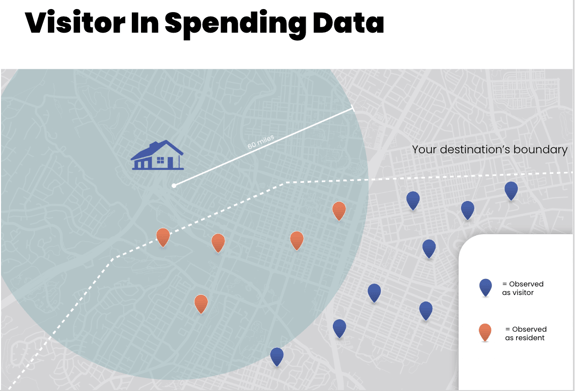What defines a person as a visitor as opposed to a resident? That is a fantastic question!
When Looking at Geolocation Data
The biggest differentiator from a visitor to a resident is whether that person has departed more than 50 miles from their known home location.
So imagine a bubble, an invisible fence, a forcefield, or a WandaVision telekinetic energy barrier... if a device is within 50 miles of their known home location they are considered a resident. They are considered a visitor if they are outside that 50-mile known home location bubble.
The 50-mile radius in the geolocation definition of a visitor aligns with the established definition set by the U.S. Travel Association (USTA).
.jpg?width=581&height=327&name=Zartico%20Training%20(13).jpg)
When Looking at Spending Data
A visitor is defined slightly differently when looking at spending data.
Similarly, a visitor is defined by the distance a person is seen from their known home location, but in spending data, we are pulling this information from their credit/debit card rather than a physical observation. In the case of spending, we have the zip code that is attached to the credit/debit card being used and the zip code attached to the merchant account.
A cardholder is counted as a visitor when the center of the cardholder zip code associated with the card used is more than 60 miles from the center of the merchant zip code.

Really what this is defining is whether a person is in an expected or typical location relative to their day-to-day visitation pattern vs. in an unexpected location.